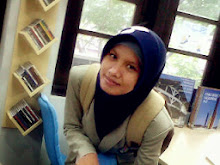Historical overview of foreign language teaching (FLT) method
-
Sixteenth Century : The grammar-Translation method
It
was the dominant method for many centuries and was best exemplified by the
formal teaching of the classical language (Latin and Greek). Language analysis,
memorizing paradigms and complex grammar rules in order to be able to read and
translate literary texts and to learn to write similiar texts were supposed to
train the mind of the student. The FL was hardly ever used in class and no
language communication skills were developed.
- By the end of nineteenth century: The common term-the direct method
This method presented discussion in the target
language as the major priority.
- In the 1920s and 1930s : The audio-lingual method
The
audio-lingual method was used by United States Army for “crash” instruction in
foreign language during world war II. It has students listen to or tapes of
language models acting in situations.
- 1970s : The cognitive code learning
This approach introduced the four principle language skills
for the first time: listening, speaking, reading, and writing. Oral
communicative competence became the focus. Comprehensible auditory input became
important and speaking in the target language began to occur. Learning about the language was overemphasized.
- In the early 1980s : The
natural approach
The
method reflects what is sometimes called second
language acquisition tradition and is based on Krashen’s monitor theory.
Among the fundamental tenets of the theory is the principle that the only
valuable knowledge of a language can be obtained through acquisition, an
unconscious process that is the same as first language acquisition. Within the natural approach
teacher should provide learners with comprehensible input that is fine-tuned to
a level a litle above the learners’ current level of competence. The focus of
classroom activities should be on meaning, not form, and classroom atmosphere
should br positive so as keep the affective filter low.
-
The present:
1. Comunicative
language teaching (CLT), it refers to a number of approaches that are based on
the belief that language is not just a system of rules but a resource for
creating meaning.
2. Task-based
language learning, it represents a new approach to language learning that, in
many ways, stands on the opposite end of form-based language learning.
3. Computer-assisted
language learning (CALL), It has been confirmed as having a great motivational
value. It enables shy learners to practice by speaking up and not feeling
anxious as they, for instance, do speech-recognition activities on the computer
by themselves.
.jpg)





0 komentar:
Post a Comment